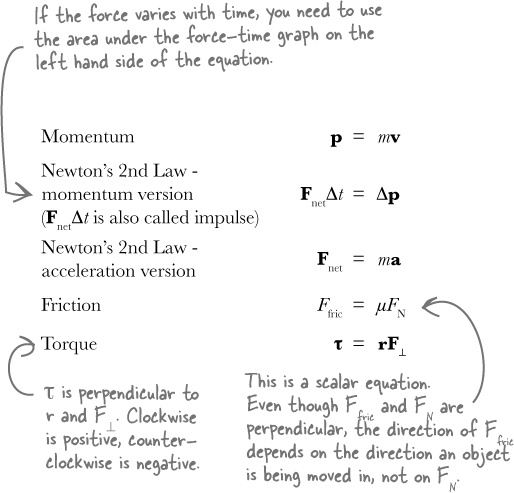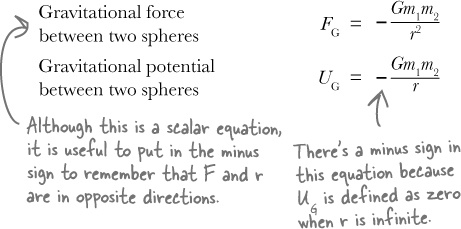Appendix B. Equation Table: Point of Reference

It’s difficult to remember something when you’ve only seen it once. Equations are a major way of describing what’s going on in physics. Every time you use equations to help solve a problem, you naturally start to become familiar with them without the need to spend time doing rote memorization. But before you get to that stage, it’s good to have a place you can look up the equation you want to use. That’s what this equation table appendix is for - it’s a point of reference that you can turn to at any time.
Mechanics equation table
Equations of motion
“No displacement” | v = v0 + at |
“No final velocity” | x = x0 + v0t + ½at2 |
“No time” | v2 = v02 + 2a(x - x0) |
Forces

Work and energy

Circular Motion

Gravitation

Simple Harmonic Motion
Force and spring constant | Fs = -kxv |
Elastic potential energy of a spring | Us = ½kx2 |
Standard SHM equations take one of these forms for x, v and a (depending on ititial conditions) | x = x0sin(ωt) x = x0cos(ωt) |
Angular frequency for mass on a spring ... |
Get Head First Physics now with the O’Reilly learning platform.
O’Reilly members experience books, live events, courses curated by job role, and more from O’Reilly and nearly 200 top publishers.

